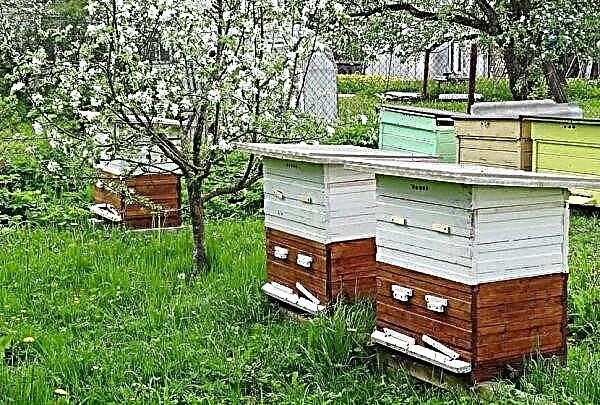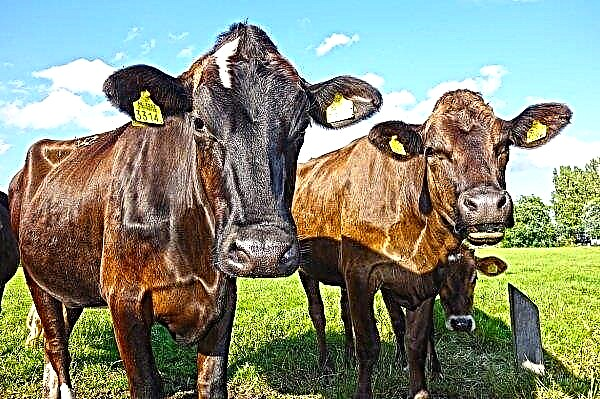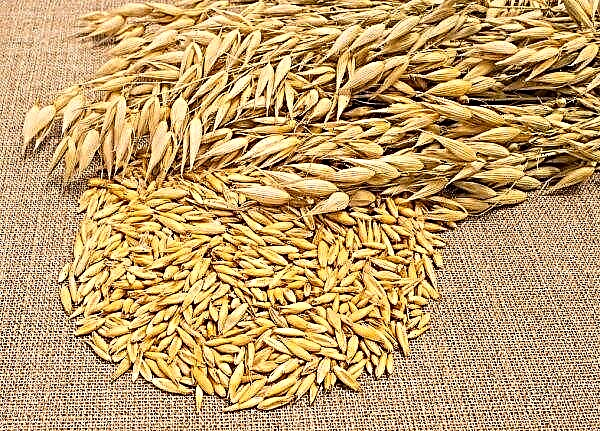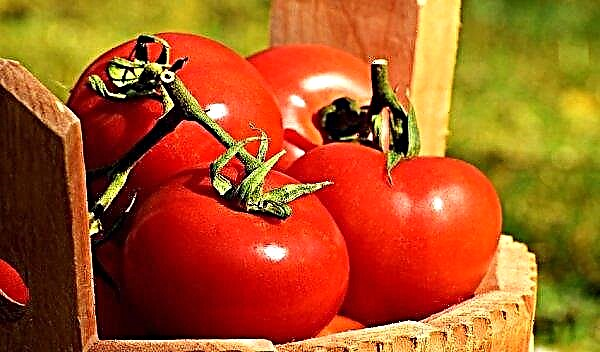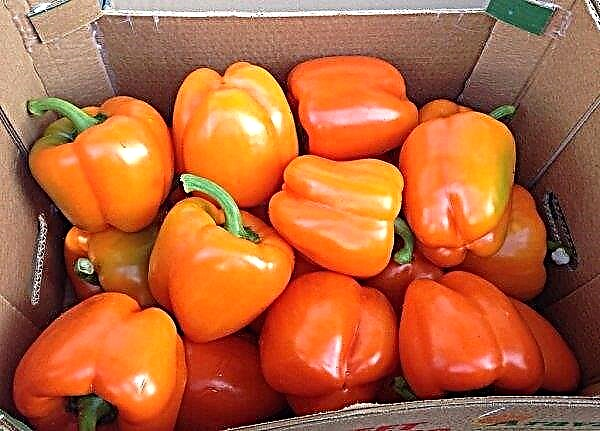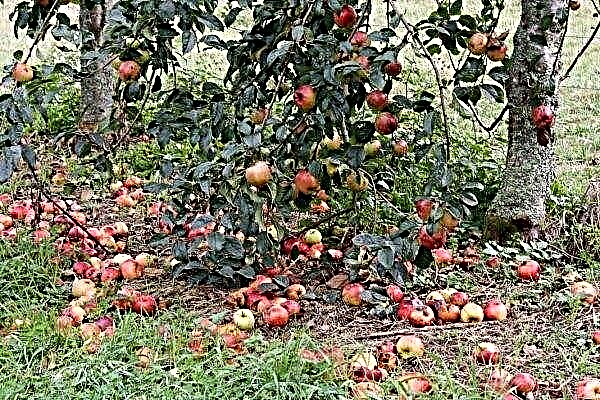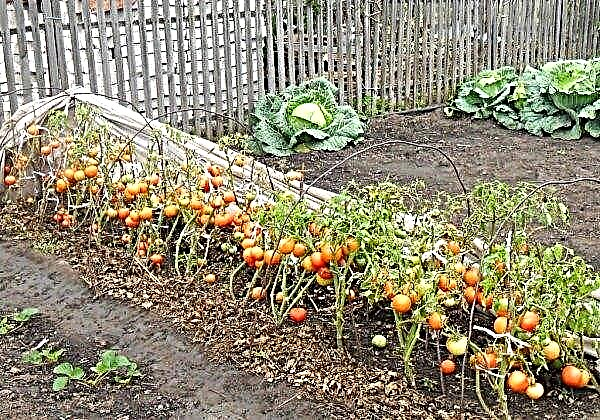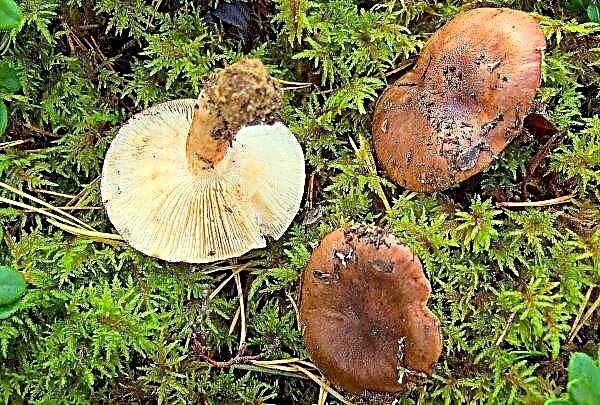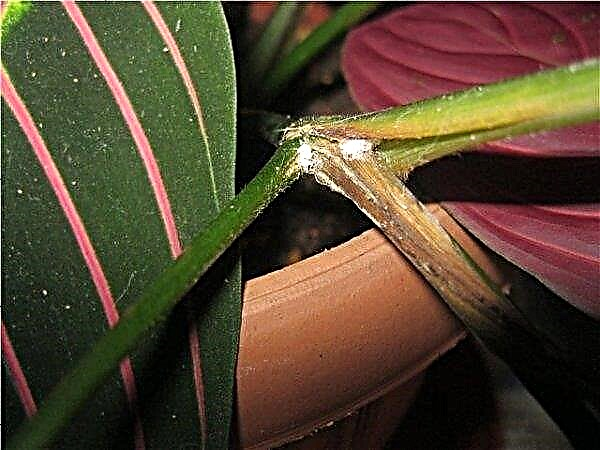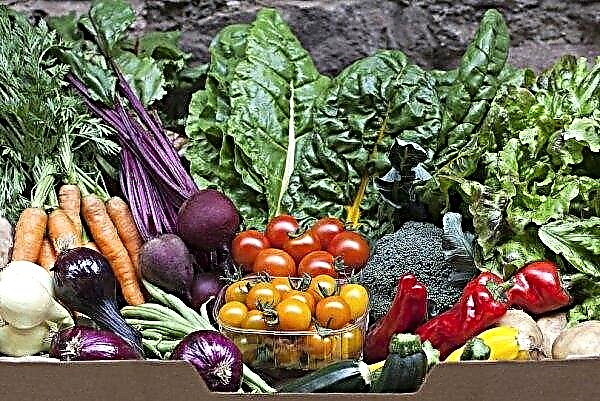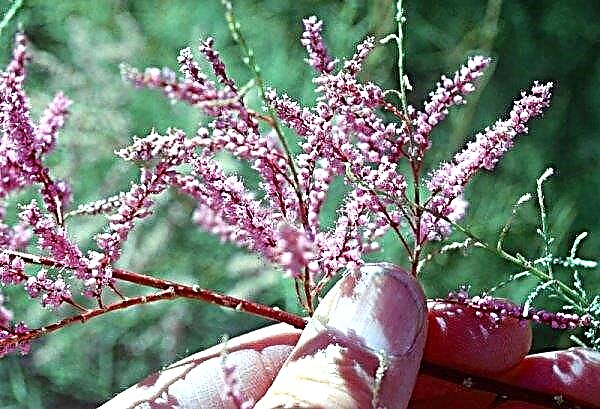Pine trees are increasingly attracting the attention of gardeners and landscape designers. Evergreens decorate the site year-round, and in addition, they purify the air, saturating it with useful volatile products. Today, the article details the yellow pine and the intricacies of its cultivation.
Botanical tree description
Yellow pine is also called Oregon, according to one version, it was here in Oregon that it was first discovered and classified as a separate species. This is a large tree, common in Canada, North America and Mexico.
Pínus ponderósa (Latin name) on average grows up to 40 meters, there are giants up to 80 m tall. The girth of an even, slender trunk is 80–120 cm. The color of the bark can be gray-brown, reddish and yellow, like needles in some species. Perhaps the latter fact explains the origin of the name of the plant. The structure of the cortex is furrowed, consists of coarse-scaly strips.
The crown is wide, rounded or in the shape of a cone, formed by strong, rough to the touch shoots. Needles from light green to yellow-green, needles 7–25 cm long.
Monoecious plant:
- male cones in the form of an ellipse, up to 3.5 cm in size, yellow or red;
- female fruits are ovoid, up to 15 cm long, painted in a reddish-brown tone.
Did you know? In the Middle Ages, many peoples used pine branches as a strong amulet. In the house they protected from evil spirits, and the branches under the pillow from nightmare dreams.
Light brown, winged seeds about 9 mm long ripen in the cones.
The most famous varieties:
- pinus ponderosa of Douglas-Lawson;
- pinus ponderosa scopulorum or rocky;
- pinus brachyptera;
- pinus benthamiana.

Landing
They plant pine in the spring, when the soil warms up to + 8 ° C, and in the fall, 1.5 months before frosts. The seedling is not older than 5 years, before planting it is necessary to prepare, for 2-3 hours to put in a bucket of water to moisten the roots well. The hole is prepared with a size of 100 × 80 cm, a drainage layer of 20 cm is placed on the bottom. If necessary, the soil extracted from the pit is deoxidized by adding 200-400 g of wood ash, if the soil is heavy, clayey is “diluted” with sand 2: 1.
Video: Yellow pine or pinus ponderosa
Landing technology:
- A hill is poured over the drainage to the height of the roots of the seedling.
- The plant is placed on the embankment, so that the root of the neck is above the surface of the earth.
- Fall asleep, spreading the roots, shaking the tree (to exclude air pockets).
- Then a little tamping and irrigation is carried out, spending 5-7 liters of water.

Pine care
Particular care must be taken to care for the young tree so that it takes root well in the new place. Pine crops are unpretentious in care, they are usually resistant to bad weather conditions, to drought and possible attacks of pests or diseases. Nevertheless, some procedures are mandatory for normal development.
Watering and feeding
The first 2-3 months after planting, the culture is watered 1-2 times a week, depending on precipitation. The soil needs to be moistened to a depth of 30 cm. After the rooting period, watering is carried out once a month, there is enough rain for the coniferous culture.
Important! An adult tree is watered only as necessary in the absence of natural rainfall, otherwise the chubby root system will begin to rot.
The pine family needs little nutrition, there are several reasons for this:
- culture does not produce crops, therefore, does not need a long restoration of strength;
- needles are dumped by plants every 4-6 years, so nitrogen is rarely needed as a building material for greens and in small quantities;
- in natural conditions, trees often grow in mountainous conditions, on poor lands, they are perfectly able to extract nitrogen from the air.
Organic fertilizers are used exclusively in the spring, every 3-4 years. In this case, you can not use manure or humus, it can destroy the conifer. A plant type organic compost, egg shells or green infusion just right. Organic top dressing is embedded in the soil of the near-stem circle of 3-5 kg per m², infusion of enough 8-10 liters per tree.
 In mid-summer, superphosphate granules are used, adding 40 g per m² to the soil, after which they are carefully watered
In mid-summer, superphosphate granules are used, adding 40 g per m² to the soil, after which they are carefully watered
In autumn, special complexes for conifers are used for winter recharge.. Good results were shown by the Green Needle preparation. It has enough magnesium, sulfur and other nutrients. Add the product to the trunk circle in dry form. The dosage for the plant is less than 2 m in height - 50 g, as the culture grows, it increases by the same number: 2-4 m - 100 g, 4-6 m - 150 g, etc.
Loosening and mulching
After watering, as well as after fertilizing, the soil needs to be loosened to saturate the root system with oxygen. Simultaneously with this procedure, the ground around the trunk of the plant weed from weeds. To protect the tree from moisture evaporation and root overheating, the trunk circle is covered with a layer of mulch 6-8 cm.

As the material used:
- fallen needles;
- tree bark;
- sawdust;
- the straw.
Important! In the northern regions with harsh winters, mulch is laid in a thick layer up to 25 cm to protect the roots from freezing.
Pruning
Every year in spring, yellow pine needs a sanitary haircut. Frozen and broken shoots, branches affected by the fungus are removed. To restrain the growth of a young plant, skeletal shoots, strongly knocked out of the contour of the crown, are cut to the desired length. When the pine reaches 10 years, a rejuvenating haircut is needed. For pruning, choose old large branches growing at the bottom of the trunk, they are removed to the ring.

Possible diseases and pests
One of the most unpleasant pine diseases is shute.. The disease has several types, affects the needles. The cause of the disease is high humidity, so proper care is a preventative measure. Treat the shute with a spray of Bordeaux mixture, 3% solution. Preventive spring treatments are carried out with a solution of 1%. The fungicide “Khom”, a solution for spraying in the proportion of 40 g / 10 l of water, is also considered effective against fungi.

Pests of culture and methods of dealing with them:
- Pine sawfly destroys needles. Against it use spraying with the drug "Actellik" 2ml / 1 liter of water, again after 7 days.

- Bark beetleGnawing passages in the bark of a plant, weakens it and opens the way for other insects, such as a subclinical bug. If the insects are not neutralized, the tree may die. An effective means of control is intra-stem injection with Clipper. 100 ml are injected into the trunk per tree, at a height of up to 15 meters, if the tree is higher, a dose of 200 ml. As a prophylaxis, 100-200 ml of the drug is diluted in 5 l of water and plants are sprayed.
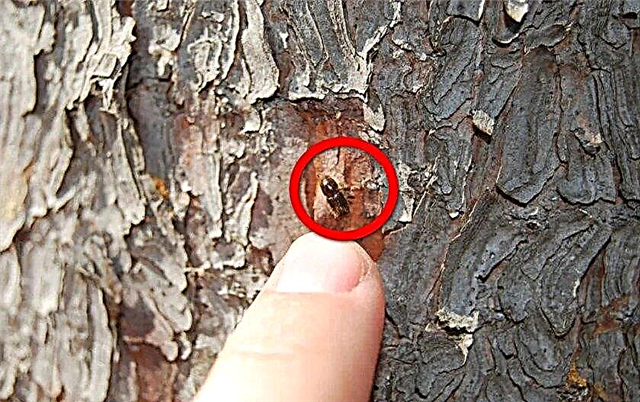
- Brown aphid sucks juice from needles and branches. With a small attack, folk remedies such as tobacco dust or a solution of potassium soap will work. In a difficult situation, the insecticide "Agravertin" 2 ml / 1 liter of water is effective, spray the tree.

The use of wood in landscape design
Conifers can be used in various forms of planting. They will serve as a beautiful hedge or delimit the space into several zones.
Pines get along with almost all ornamental or fruit plants:
- pear;
- Apple tree;
- Rowan;
- thuja;
- juniper;
- spirea.
Yellow pine (Pinus Ponderosa) of different varieties and color of needles can be planted in a group.
Did you know? There are places on our planet where trees inexplicably grow not up, but to the sides, bending, even twisting into a spiral. In the Kaliningrad region, such a pine massif was called "Dancing Forest".
The tree looks good against the background of flowering perennials:
- lily of the valley;
- poppy;
- primrose
- violet;
- bell;
- sedum.
 Combining blooming flowers and herbs with pine trees at different times, they create beautiful alpine hills and rockeries, rocky gardens
Combining blooming flowers and herbs with pine trees at different times, they create beautiful alpine hills and rockeries, rocky gardens
From the botanical description of yellow pine, we can conclude that the plant will grow by itself. Culture is really not whimsical, but the more attention a gardener pays to it, the more magnificent and colorful it looks.




